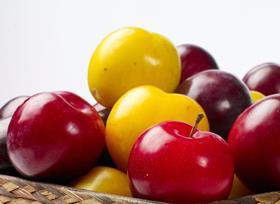
Although the figures look good for the stonefruit category, like most fresh fruit and vegetables, a number of issues abound.
One of these has been dominating news headlines on a more general level in the UK over the past few weeks, with the portmanteau ‘Brexit’ passing into common usage.
Jon Clark, commercial director for cherries and stonefruit at Total Worldfresh, tells FPJ: “Stonefruit is similar to most industries and produce areas, as exchanges rates are a key point around imports. The euro in particular is having a major impact on the summer season. For example, where will the UK be in relation to Europe? Will Greece destabilise the Euro again?”
In South Africa, one of the products’ key supply nations, water shortages “become more of a concern” with each passing season, and have led to smaller fruit sizes this season, according to Clark. Suppliers from that nation, though, insist that despite the heat and drought conditions in some of the Cape regions, volumes remain “excellent”, while Clark adds that active water management from all supply nations is something that needs to be dealt with. Industry insiders claim that the northern hemisphere season is expected to have an early start, potentially by up to two weeks earlier than normal.
But with the variable temperatures experienced in that part of the globe, combined with a lack of chill units, many growers have expressed concerns around the effects this could have on crop volumes: “The coming weeks and months will be critical as trees begin to flower, and we need to avoid frosts and rains in order for the flower to set as fruit,” Clark says.
The winter season has seen a fall in supply of cherries from Chile, the dominant southern hemisphere source, as a result of the El Niño weather pattern. This reduction, along with increases in prices, has subsequently resulted in a fall in demand. This slump coincides with British supermarkets’ race to the bottom on price. On this, Clark notes: “With rising costs of production, and with a drive for lower consumer prices, stonefruit has been no exception in seeing values fall in some areas.
“Providing this is offset with a suitable increase in volumes to get the balance and make it economical, there is some efficiency that can come from this, but if prices are driven down, and consumption does not increase, it is not good for this or any other category.”
Meanwhile, South African stonefruit promotions, which have been implemented in both the UK and Germany, with the aim of communicating the superior taste of South African fruit, are proving successful: “We have done extensive consultation with consumers and the trade, specifically in Germany, where different messages have been received from consumers and the trade in the past,” Jacques du Preez, stonefruit product manager at South African horticultural trade body Hortgro, says. “We realised that in order to offer consumers the right product, we need to start with the trade.”
In Germany, season-on-season sales were up by 23 per cent last year, and in both Germany and the UK, promotional activities with retailers such as Aldi and Lidl have been increased in line with those respective businesses’ growth in market share. It is expected that the South African stonefruit season will end earlier this year. And at its conclusion, it is predicted that plums will be about six per cent down on last year, with less than 11 million cartons being exported in all.
Nectarines are predicted to conclude at about 3.7m cartons, which is more or less the same as last year after a few years of consistent growth; apricots will show a 14 per cent decline; while peaches will be the only stonefruit category to buck the trend, rising significantly to breach the two million carton mark.
On the specific products front, Flavor Fall, which is being marketed by Fruits Unlimited, is tipped to make an impact in Europe and the Far East, aided by increased plantings, and due to its appearance and eating quality. Hans Muylaart Gelein, of Fruits Unlimited, says: “Flavor Fall is one of a series of new and exciting varieties being tested by the company and which will continue to bring change to the South African plum category.”
Looking forward for the category as a whole, Clark spells out the primary goal of those involved in the stonefruit trade: “We are spending time and money with our R&D for both varietal development and season extensions. It sounds simple, but if we can make better tasting fruit available for longer at a fair price for all, it will in turn grow the category.”



